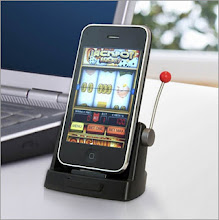Last week, a video went viral that shows a toddler swiping and tapping on an iPad like she had been doing it since the day she emerged from the womb. The video then cuts to the baby futilely trying to operate a magazine and getting frustrated when this foreign piece of print media doesn't work like a touch-screen device.
But what if you could make anything into a touch screen? Through a partnership with Microsoft, that's exactly what a group of researchers from Carnegie Mellon University's Computer Interaction Institute have created with a shoulder-mounted device called "OmniTouch."
Using a laser-based pico projector and a short-range depth-sensing camera for taking 3D images, the shoulder-worn device can make a wall, a table, a hand, and many other items into a touch screen. Once the camera and the projector are calibrated together, any surface can be manipulated by touch.
"We wanted to capitalize on the tremendous surface area the real world provides," Microsoft Redmond researcher Hrvoje Benko explained. "The surface area of one hand alone exceeds that of typical smartphones. Tables are an order of magnitude larger than a tablet computer. If we could appropriate these ad hoc surfaces in an on-demand way, we could deliver all of the benefits of mobility while expanding the user's interactive capability."
Benko compared OmniTouch to the Microsoft Kinect for Xbox 360, but clarified that OmniTouch "is modified to work at short range."
One of the challenges in developing OmniTouch was deciphering how the system would work with fingers. It also had to overcome such issues as identifying any surface as touch and teaching the system how to identify clicks without buttons or sensors.
To see OmniTouch in action, check out the video below.
















0 comments:
Post a Comment